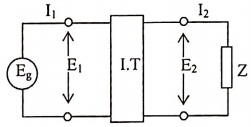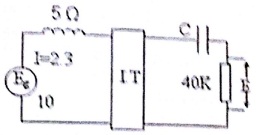Assignment:
Scenario:
You have started work at a mechanical workshop which accommodates many single phase transtormers, a single phase and three phase induction motors and many other machines, As part of the annual appraisal and as an important step towards any future promotion and to get Ihmiliarised with a number of the machine concepts and to enhance knowledge and understanding around the workshop the manager has set the following tasks:
Q1 Recognise at least three types of transformers used in different applications in the workshop. Explain with the aid of diagrams the construction and operating principles of two.
Q2 Produce a complete Equivalent circuit of a practical transformer under nominal rated loading condition; explain the different parameters of the circuit. Introduce experimental methods for measuring the different parameters of the circuit.
Identify the operating principles of the transformer under no-load and full loaded conditions (reflect on the equivalent circuit and the input current calculations).
Q3 Discuss the possible modes of connections of 3-phase power transformers. said three identical single transformers at the workshop show clearly with the aid of diagrams how to connect them into a 3-phase transformer (do not apply the sample introduced in the classroom)
Q4 In a schematic diagram (not cut and )astc) show the complete construction of a squirrel cage 3-phase induction motor and hence explain its main parts. Explain the operating principles of the motor using the principle of rotating magnetic field and compare with the wound- rotor induction motor.
Q5 Investigate with the aid of diagrams a complete torque/speed curve or an induction motor explaining its different sections. Apply and analyse in detailed knowledge the effect of the rotor resistance on the motor performance and state the conditions required for starting and running the squirrel cage induction motor.
Explain methods of starting the squirrel cage and wound rotor induction motors
Q6 State methods of speed control of squirrel cage induction motors and describe one method fully.
Q7 Identify and apply strategies to find apropriate solutions
a) Explain what is meant by Hysterisis and Eddy currents in a.c machines. Draw Hysterisis loops for different magnetic materials and show how to calculate the Hysterisis loss using a complete loop of a certain magnetic material and a computational method.
b) Show underpinning knowledge of the losses in a power transformer when a Wattmeter and Varmeter are connected into a 120V line that feeds the transformer, giving readings of 1800W and 960 Var respectively, calculate the in-phase and quadrature current components lc and IM and the line current.
Calculate the apparent power supplied by the source and draw the phase diagram of the system and calculate the phase angle and P.F.
Q8 Select and apply appropriate methods/techniques
a) In the circuit shown bellow, apply the relevant transformation theories of a power transformer of turns ratio (a) to transform Z, E2 andl2 from the secondary circuit into the primary as Zx, Ex andl x, show that:
Zx =a2Z
Ex = aE2
1x = -12 / a

b) Derive similar equations when the primary parameters are transformed into secondary circuit.
Q9 Use critical reflection to evaluate own work and justify valid conclusions
1) In the circuit bellow calculate the value of the capacitance (C) and the voltage (13) knowing that the ideal transformer has a turns ratio of (a =1:100) , input current and voltage of 2.3A and 10V respectively (reflect the secondry parameters into the primary circuit).
2) Repeat calculation or C by transtbrming prinutry pontineters into secondary circuit.

Q10 Demonstrate convorgent/latoral/creative thinking
1) Reflect on the performance of a 3-phase induction motor by evaluating calculated results of a motor having a nominal rating of 75kW and a synchronous speed of MOO rev/min connected to a 600V source. The two-wattmeter method shows a total power consumption of 70kW, and precise measurements give a rotor speed of 1703 rev/min, In addition the following characteristics are known about the motor.
Stator iron loss = 2kW
Windage and Friction losses = 1.2kW
Resistance and inductance between two stator terminals am 0,41Ω and 32mH Respectively, Calculate:
a) The power supplied to the rotor.
b) Rotor copper loss.
c) Mechanical power supplied to the load in hp.
d) Torque developed at 1763 rev/min. and efficiency
2) A 3-phase 50Hz, 4-pole induction motor with tutor standstill Parameters or RR = 0.5Ω, XR =1.5Ω. and ER I20V , plot the Torque/slip curve for the motor using the rotor equivalent circuit approach.